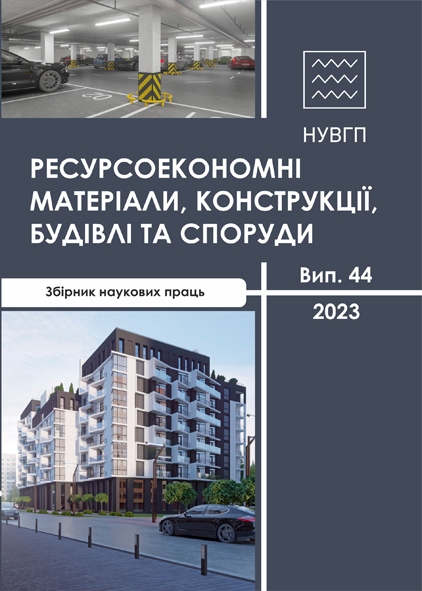DEFORMATION OF WOOD DURING AXIAL COMPRESSION, DIRECT AND OBLIQUE TRANSVERSE BENDING
DOI:
https://doi.org/10.31713/budres.v0i44.19Abstract
In the laboratory of the National University of Water Management and Nature Management, complex experimental and theoretical studies of the operation of elements made of solid and glued wood under axial compression, direct and oblique transverse bending were carried out. The obtained results of experimental studies made it possible to establish the shear modulus of wood deformations under axial compression and transverse bending. The shear modulus of deformations with increasing loads decreases due to the growth of elastic and plastic deformations of wood, and at any two experimental points, a graph of dependence can be reliably plotted and the initial modulus of elasticity of wood can be established.
The layer-by-layer relative deformations of the wood in the beams were established, which were determined in the zone of pure bending at different distances from the neutral plane at different levels of load. Also, the processing of the research results made it possible to construct diagrams of the deformation of different layers of wood of beams made of solid and glued wood in the zone of pure bending along the height of the transverse cross-section for work on direct and oblique bending under the action of one-time and repeated loads. This made it possible to experimentally establish the position of the neutral line in the zone of direct net bending. It was established that starting from the beginning of the application of a one-time short-term static load, the neutral plane in beams made of solid and glued wood changes its position in the direction of decreasing the height of the stretched zone.
Also, an increase in the load in beams made of solid and glued wood due to an increase in the number of cycles for low-cycle repeated loading leads to the displacement of the neutral line in the section of the zone of pure bending towards the stretched zone, as a result of which the area of the compressed zone increases. The data of the study provide an opportunity to improve the new method of calculating bending elements from wood according to the deformation model.

